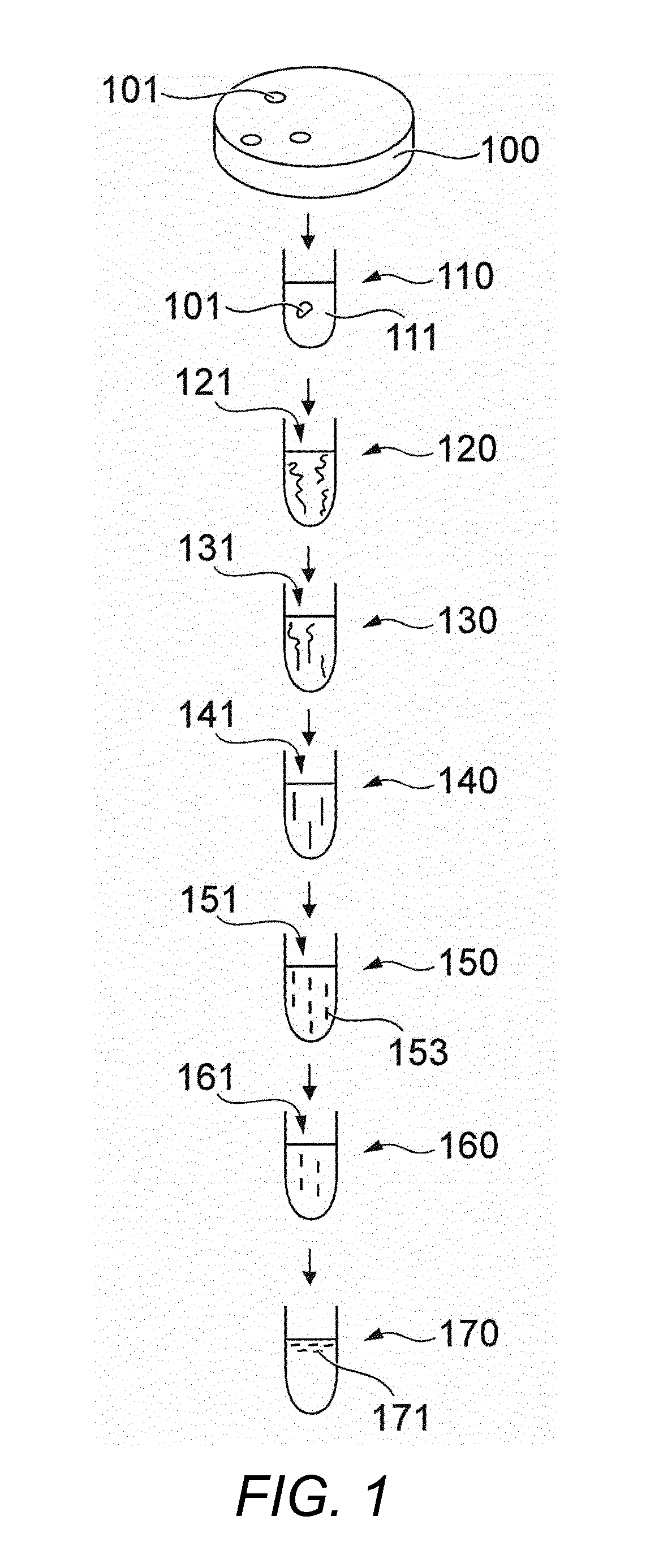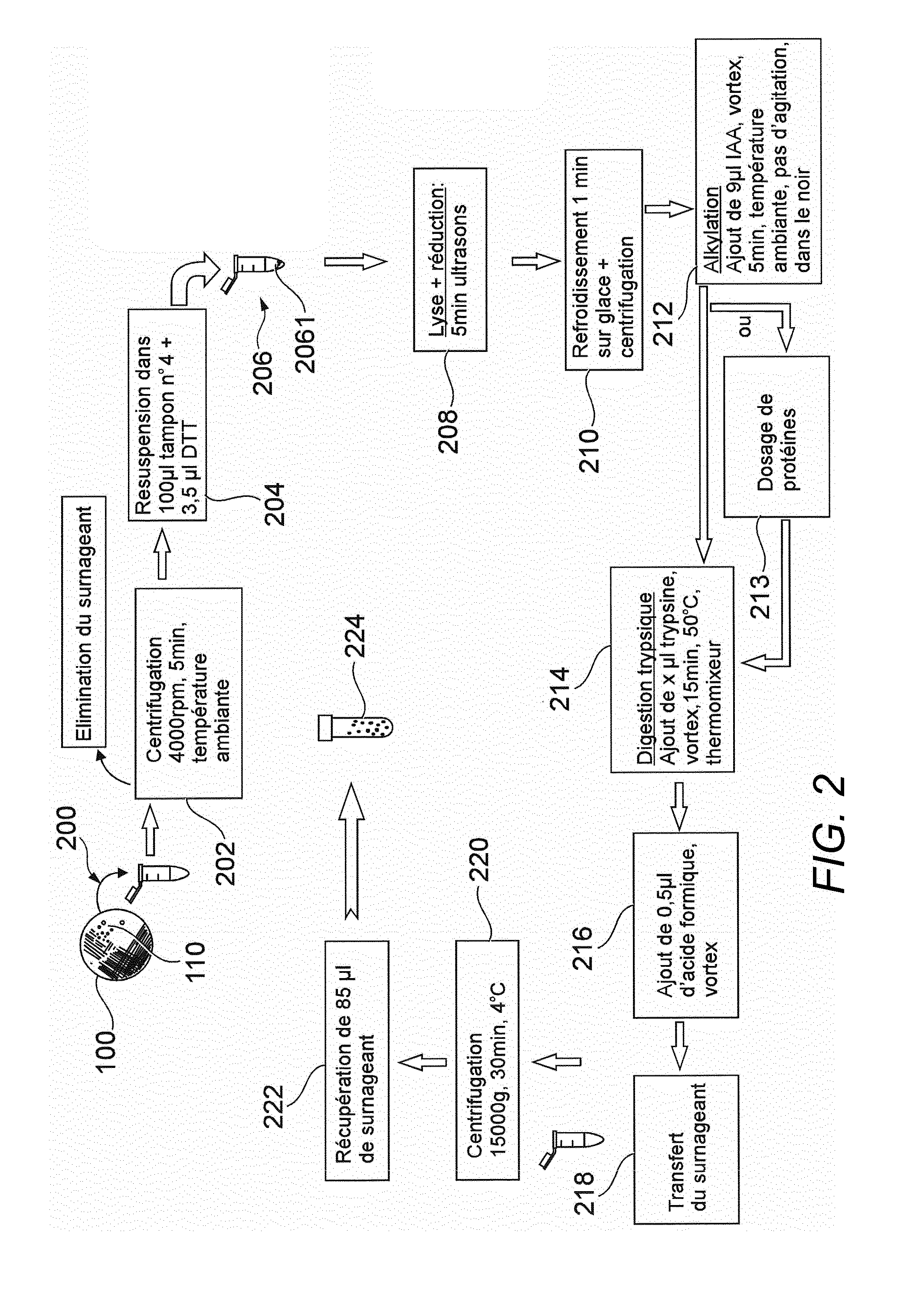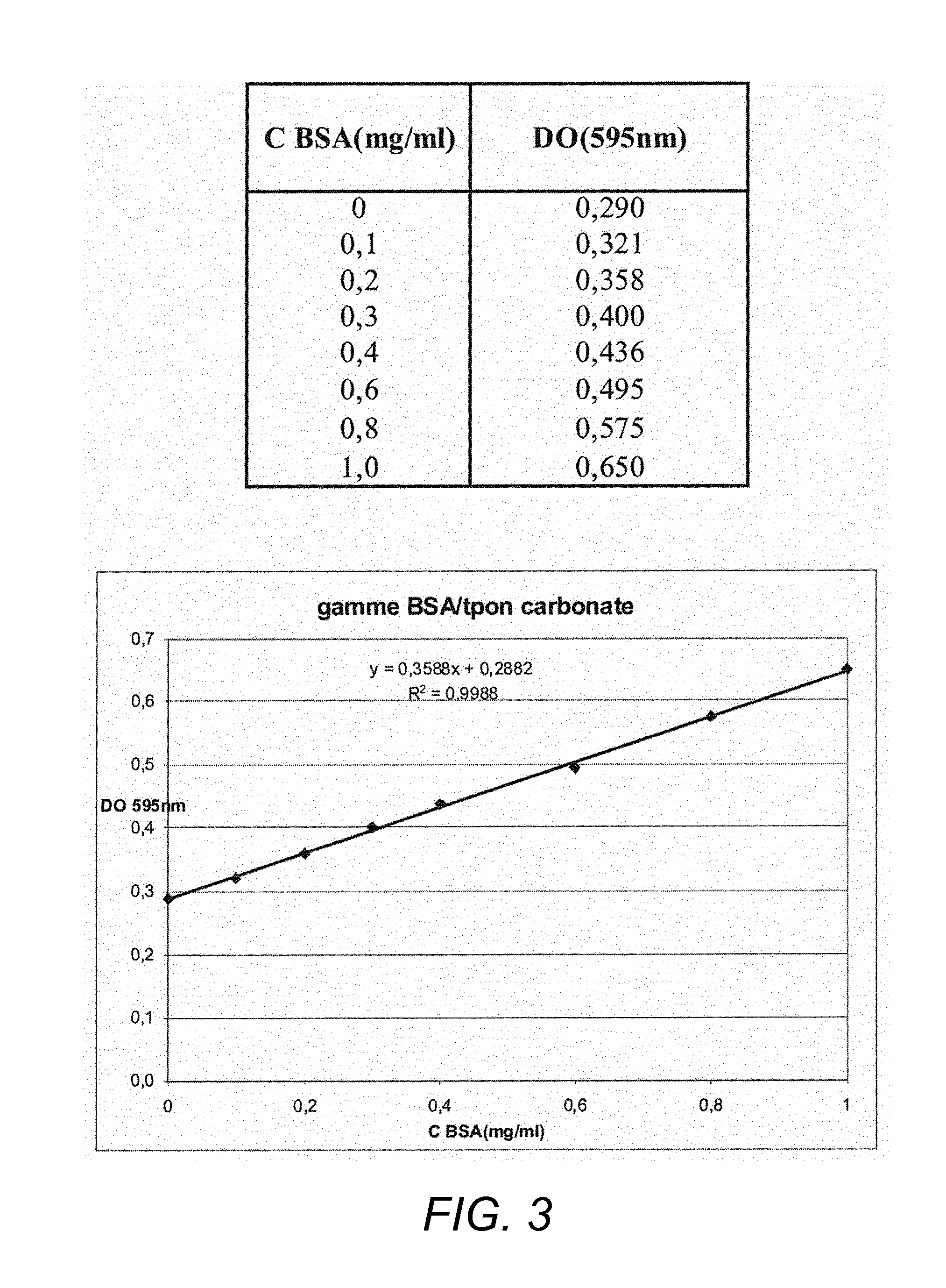Method for obtaining peptides
a peptide and peptide technology, applied in the field of peptide obtaining methods, can solve the problems of inability to detect the protein sample in time, the treatment time of the protein sample is therefore greater than 14 minutes, and the protocol is much more rapid, and the effect of simple reaction
- Summary
- Abstract
- Description
- Claims
- Application Information
AI Technical Summary
Benefits of technology
Problems solved by technology
Method used
Image
Examples
example 1
Protocol P0
[0128]Protocol P0 is a protocol for preparation of a sample conventionally used in the prior art in order to obtain peptides from microorganisms. This method P0 comprises in particular a step of lysis at high salt concentration (guanidine 6M: chaotropic agent) as well as a long step of tryptic digestion. P0 is used below as a reference in order to evaluate the quality / efficiency of the protocols for obtaining peptides according to a first aspect of the invention (protocol P1) Said protocol P0—described below with reference to FIG. 1-lasts for approximately 24 hours and comprises the following steps:[0129]placing in suspension one to three colonies of a microorganism 101 (such as a bacterium of E. coli type) cultured on a Petri dish 100 in a vial comprising a solution 111 composed of 100 μl of guanidine hydrochloride 6M, 50 mM Tris-HCl, pH 8, and leaving the lysis reaction 110 to take place for a period of approximately 10 minutes;[0130]introducing, at the denaturation / red...
example 2
Protocol P1
[0136]A method according to a first aspect of the invention—called “protocol P1” or “method P1”—is described below, with reference to FIG. 2.
[0137]This protocol P1 permits very rapid preparation of the sample prior to the subsequent analysis steps, performed, for example, by mass spectrometry. The duration of all of the steps of protocol P1 is approximately 30 minutes. It comprises in particular the following essential steps:[0138]lysis and reduction 208 (performed conjointly / simultaneously), in the presence of DTT 5 min under ultrasound,[0139]alkylation 212: in the presence of IAA, 5 min at ambient temperature and without agitation,
and
enzymatic proteolysis (also called enzymatic digestion) 214: in the presence of trypsin, 15 min at 50° C.
[0140]As indicated above, the protocol P1 is performed in approximately 30 minutes and gives similar results (MRM analyses) to those obtained by protocol P0 (cf. Example 1—duration of treatment: 24 h), on each of the three microorganisms...
example 3
Protocol P2
[0219]A third aspect of the invention, called “protocol P2” (or “method P2”), is described below, with reference to FIG. 8. This method P2 is particularly preferred within the context of the present invention.
[0220]In this Example 3, the method P2 is used to obtain peptides from microorganisms.
[0221]This method P2 is a protocol for very rapidly obtaining peptides from procaryotic and / or eucaryotic cells, which can be used in particular prior to steps of analysis by mass spectrometry type.
[0222]Just like the protocol P1, this protocol P2 is also performed in approximately 30 min but combines the steps of lysis, denaturation / reduction, alkylation and enzymatic digestion in a single step 810. These different steps are indeed performed conjointly / simultaneously in a single and same vial at 50° C., under ultrasound for 30 minutes. Thus, there is no need to perform manual interventions between these steps, nor to add reagents during the method. The protocol P2 is therefore easy...
PUM
| Property | Measurement | Unit |
|---|---|---|
| pressure | aaaaa | aaaaa |
| pressure | aaaaa | aaaaa |
| pressure | aaaaa | aaaaa |
Abstract
Description
Claims
Application Information
 Login to View More
Login to View More - R&D
- Intellectual Property
- Life Sciences
- Materials
- Tech Scout
- Unparalleled Data Quality
- Higher Quality Content
- 60% Fewer Hallucinations
Browse by: Latest US Patents, China's latest patents, Technical Efficacy Thesaurus, Application Domain, Technology Topic, Popular Technical Reports.
© 2025 PatSnap. All rights reserved.Legal|Privacy policy|Modern Slavery Act Transparency Statement|Sitemap|About US| Contact US: help@patsnap.com



